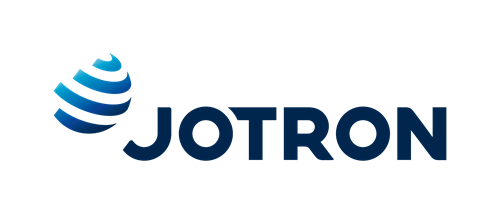ATC Communications

Address
Madrid
Spain
Contact
Tel+34606619085
Contact person
info@merideam.com- Institution
- MERIDEAM
- Duration
- 1 Weeks
- Presence type
- Full-time/Part-time
Education information
1. OBJECTIVES.
Identify and recognise the different services that Communications provide to ATC systems.
Learn the basic concepts on communications, services provided by different protocols and most significant activities in the different Communications Programmes.
Describe the architecture of a Transport network and its Management system.
Describe the Communications services provided to main ATC users.
A global vision on Communications systems will be delivered analyzing the function of each of them in the ATC services provided by an Air Navigation Service Provider (ANSP) as well as their envisaged evolution and strategy of developments in the future.
For achieving these objectives, national and international institutional aspects that establish technical and operational requirements will be taken into account.
Strategies evolving these systems will be specially highlighted.
2. TO WHO IS ADDRESSED.
This course will be directed to:
Engineering, Technical and/or Maintenance professionals of an Air Navigation Service provider (ANSP) that are involved in the design, installation and/or operation of existing ATC Communications systems within the CNS/ATM framework ('Communications, Navigation, Surveillance / Air Traffic Management') as well as in the development of strategy of such systems aligned with international standards and regulations.
ATC Communications sector companies staff requiring knowledge of the communications systems currently providing service in the world of Air Navigation as well as the evolution of these systems defined in the different International Agencies (ICAO, Eurocontrol, EUROCAE, ETSI, EASA,...). In this way, companies would be able to analyse the evolution of their current ATC Communications systems as well as having a more global view of various subsystems that make up an Air Navigation solution to be able to define strategies that allow them to generate more complete Offers bidding to the different Call For Tenders launched by the ANSPs.
3. PROPOSED TABLE OF CONTENS.
The table of contents of the course is detailed below.
In each of the items, both the description of the current system and the envisaged evolution will be collected.
1. THE ISO MODEL.
1.1. Communications protocols
1.2. Protocols hierarchy
1.3. Design aspects
1.4. Interfaces and services
1.5. Relationships between services and protocols
1.5.1. Connection oriented services
1.5.2. Non-connection oriented services
1.5.3. Reliable and non reliable services
1.6. ISO model layers
2. TECHNICAL DETAIL OF THE ISO MODEL LAYERS
2.1. Layer 1: Physical
2.2. Layer 2: Link
2.3. Layer 3: Network
2.4. Layer 4: Transport
2.5. Layer 5: Session
2.6. Layer 6: Presentation
2.7. Layer 7: Application
2.8. WAN/LAN description
2.8.1. Local Area Networks (LAN)
2.8.2. Wide Area Networks (WAN)
2.8.3. TCP/IP vs OSI
3. GROUND/GROUND COMMUNICATIONS SOLUTION FOR AN ANSP.
3.1. Mission of Communications in the Air Navigation System
3.2. Communications Programmes
3.2.1. Data Communications Area Programmes
3.2.2. Voice Communications Area Programmes
4. DETAILED DESCRIPTION OF THE DIFFERENT COMMUNICATIONS SERVICES.
4.1. Communications services.
4.1.1. Aeronautical Fixed services.
4.1.2. Aeronautical Mobile services.
4.1.3. Aeronautical Radio Diffusion services.
4.2. Ground/Ground Transmission Means Programme
4.2.1. Microwaves.
4.2.2. Optical Fibre Rings
4.2.3. TDM networks: voice and data convergence
4.3. ATN (Aeronautical Telecommunications Network) Programme
4.3.1. Air Navigation networks (coexistence of different communications protocols: X.25, IP, )
4.3.2. Main Users of an Air Navigation Network
4.3.3. VSAT networks (CAFSAT/AFISNET, REDDIG, )
4.3.4. Pan-European Network services (PENS)
4.3.5. ATN concept
4.4. Strategic lines and objectives
4.4.1. Data Communications
4.4.2. Voice Communications: A/G, VCS
4.5. Analysis of the international scenario
4.5.1. ATM operational improvements
4.5.2. Technologic improvements
4.5.3. Transport Networks: Pan-European fixed network service (PENS) and the Mobile Network Service (MNS).
5. TRANSMISSION SYSTEMS
5.1. Radio links
5.1.1. Introduction
5.1.2. Systems based on radio links
5.1.2.1. Architecture of an installation of microwaves
5.1.2.2. The antennas
5.1.2.3. The transmission means
5.1.3. The radio electric spectrum
5.1.3.1. Frequency plans
5.1.3.2. Regulatory Organisations
5.1.4. Propagation principles
5.1.4.1. Open-air propagation
5.1.4.2. The refraction
6. ARCHITECTURE AND OPERATION OF AN AERONAUTICAL NETWORK.
6.1. Structure of an aeronautical network
6.1.1. Transport network - WAN
6.1.2. Access network (users)
6.2. The transport WAN network
6.2.1. Topology of the backbone
6.2.2. Topology of the Access network
6.2.3. WAN global architecture
6.2.4. naming and Addressing Plan
6.3. Example: the Spanish IP network (REDAN)
6.3.1. Backbone
6.3.1.1. WAN connections
6.3.1.2. LAN connections
6.3.2. Access network
6.3.2.1. WAN connections
6.3.2.2. LAN connections
6.3.3. IP equipment description
6.3.3.1. Generalities of LAN and routers devices
6.3.4. Naming and IP Addressing Plan
6.3.4.1. Addressing
6.3.4.2. Naming
6.4. Auxiliary elements
6.5. Global architecture of an aeronautical network
6.5.1. Architecture
6.5.2. Installation of nodes
7. AERONAUTICAL NETWORKS. INTERCONNECTION WITH OTHER NETWORKS
7.1. General concept of networks interconnection
7.2. Air Navigation networks in other countries
7.3. Data networks in other Organisations
7.3.1. SITA
7.3.2. ARINC
7.4. Public networks
7.5. Physical implementation of Gateways with other networks
7.6. PENS (Pan-European network services) concept.
8. NETWORK MANAGEMENT, SECURITY AND SIMULATION
8.1. Aeronautical networks management systems
8.1.1. Generalities of a management system
8.1.2. Management systems elements
8.1.3. Evolution of aeronautical networks management systems
8.2. Network security
8.2.1. Current situation
8.2.1.1. Transport network
8.2.1.2. Management system
8.2.2. Future security architecture
8.2.2.1. Firewalls
8.2.2.2. Virtual Private Networks (VPNs)
8.3. Simulation and Trials network
9. AERONAUTICAL NETWORKS. DESCRIPTION OF MAIN ATC USERS OF THE NETWORK
9.1. National Users
9.1.1. ATC application
9.1.2 Flight Data processing Systems (FDPS)
9.1.3. Surveillance (radar)
9.1.4. Aeronautical Information Systems (AIS)
9.1.5. Meteorology systems (MET)
9.1.6. Monitoring systems
9.1.7. RIMS stations monitoring and receptors (EGNOS)
9.1.8. ATC Voice communications
9.1.9. Management of aeronautical networks
9.2. International Users
9.2.1. OLDI, FMTP
9.2.2. International radar
9.2.3. VDL2/ACARS/ATN
9.2.4. Aeronautical messaging Networks: AFTN/CIDIN/AMHS
9.2.5. EAD (European AIS Database)
9.2.6. CFMU
9.3. Summary about aeronautical networks users
9.4. Main ATN applications: AMHS, DLIC, ADS-C, ADS-B, CPDLC
9.5. Future users: PENS concept
4. COURSE MATERIAL.
Although the material previously described composes the main body of this training activity, table of contents could be adapted to the specific needs of an Organisation contracting this course.
The material of the course is developed using PowerPoint slides including the description of each one as footnotes.
The combination of slides and notes will be edited in a Microsoft Word document that will be the workbook of the course.
The material of the course has been developed completely in English.The workload invested to develop all the material previously described has been of 300 hours.World-wide on site courses are provided.


.jpg)




.png)
